Once upon a time, there was a game meant to expand the mobile experience in the Krosmoz universe. Wakfu Raiders, the result of an ambitious partnership between the French studio Ankama and the Japanese studio Gumi, embodied all the hopes of a successful expansion into smartphones. Yet, less than a year after its release, the servers shut down permanently. Here’s a look back at the story of a project that could have changed everything but instead faded into obscurity.
The Context: Ankama Seeks Its Path on Mobile
The year 2014 marks a turning point for Ankama. The Roubaix-based studio, riding high on the success of Dofus and the promising emergence of Wakfu (especially the animated series), closely observes the explosion of the mobile market. Smartphones become the new playgrounds of choice for gamers, and the revenue generated by mobile apps reaches dizzying heights.
However, Ankama’s initial forays into this market remain tentative. Dofus Pocket, released in 2009, followed by Dofus-Arena Pocket, did not achieve the expected success. Call of Cookie, developed by Devalley Entertainment and published by Ankama, only managed to secure an average rating of 3.8 stars on the Play Store—a disappointing score. The latter has since disappeared from app stores.





« Ankama has also already tried its hand at mobile gaming, but with little success », observers noted at the time. The French studio, accustomed to the complex mechanics and deep universes of its MMORPGs, struggled to adapt its creative vision to the constraints of mobile: smaller screens, shorter play sessions, and different economic models.
It is in this context that the idea of a strategic partnership was born. Rather than continuing alone in its attempts, Ankama decided to team up with a specialist in the field.
A Determining Managerial Transition
Before the agreement with Gumi, Ankama underwent a major transition period with the appointment of Olivier Comte as CEO in 2013. This appointment marked a turning point, as he was the first external leader of the company, which had previously been run solely by its founders. His relatively short tenure, from 2013 to 2015, was marked by particularly ambitious strategic choices.
The international expansion of Ankama’s IPs was one of the major axes of his leadership, with the opening of subsidiaries in several countries to develop the studio’s global presence. At the same time, granting the rights to the Wakfu series to Netflix for international distribution represented a historic first for the company, demonstrating a desire to open up to new media markets. This approach was accompanied by an active search for strategic partnerships to conquer new segments, particularly the booming mobile market.
Despite these promising initiatives, this transition period did not last, and Olivier Comte left his position in 2015. However, it was under his leadership that the partnership with Gumi was finalized, reflecting his vision of international openness and diversification that would durably mark Ankama’s DNA.
Meeting Gumi: A Promising Partnership
On March 11, 2014, the announcement was made: Ankama and Gumi Inc. signed a « strategic partnership focused on mobile games », which seemed promising on paper.
Gumi Inc., founded in 2007, had established itself as one of the undisputed leaders in mobile gaming in Asia. After launching the first Japanese mobile social gaming network « GREE », the company developed recognized expertise in mobile gaming on iOS and Android. Its original titles such as Yakuza Wars, Knight Wars, or Duel Summoner had made their mark on the Japanese market.
But it was above all with Brave Frontier that Gumi proved its mastery of the sector. This mobile RPG, developed by the studio Alim (acquired by Gumi in 2013), became a global phenomenon. With over 7 million users in Asia and North America, Brave Frontier generated colossal revenue and regularly ranked in the top 20 of the most profitable apps in Europe.

« Gumi’s expertise in mobile game development, combined with their in-depth knowledge of the Asian mobile market, makes them the ideal partner to continue our development », declared Olivier Comte, CEO of Ankama. For his part, Hironao Kunimitsu, CEO of Gumi Inc., rejoiced: « Ankama Games is capable of creating cohesive universes that appeal to a wide audience. We are proud and happy to partner with this talented studio ».
David Ng, CEO of gumi Asia Pte. Ltd.: « Our Singapore studio is excited about this opportunity to work with Ankama on their WAKFU license. gumi knows how to develop role-playing games while respecting the brand’s tone and style, and this expertise will undoubtedly make WAKFU Raiders an incredibly fun and immersive experience. »
Camille Chafer, Technical Director and co-founder of Ankama, stated: « After the global release of the WAKFU TV series on Netflix and the MMORPG on Steam, WAKFU Raiders is a new opportunity to introduce the WAKFU universe to more fans around the world. This mobile game is a new branch of the transmedia experience we continue to build with each of our releases. »
After raising 19 million dollars the previous year, Gumi wanted to expand internationally. The opening of an office in Paris symbolized this ambition, and the partnership with Ankama represented their first strategic agreement in France.
The first project of this collaboration was announced for 2014, already sparking much speculation. Would the Krosmoz universe finally find its way on mobile?
Development in the Shadows: The Ambition of a “Better Brave Frontier”
The first clues appeared in April 2015, when the name « Wakfu Raiders » briefly appeared in the listing of games at the Ankama Lineup. But the entry was quickly removed, fueling rumors. Some speculated about a Nintendo 3DS release, recalling Ankama’s previous DS projects.
It was in May 2015 that Gumi’s official pages revealed the project’s existence: Wakfu Raiders would indeed be a mobile game, developed for Android and iOS. The « Terms of Service » and « Privacy Policy » published by the Singaporean studio confirmed the presence of integrated payment methods, suggesting a free-to-play model. Subsequent data revealed that the game would be published under the name of the provider Mynet Games Inc. on the Google Play Store, a Gumi subsidiary at the time.
« According to initial information, it would be the studio located in Singapore that would be in charge of development jointly with Ankama Singapore », as stated in our article at the time. This international collaboration illustrated the scale of the project: Gumi brought its technical expertise and knowledge of Asian markets, while Ankama provided its creative universe and understanding of the European community.
A revealing interview with videographer Simon Tay during development provided a better understanding of the project’s ambitions. Cash Ong, Studio Head at Gumi Asia, and Kris Lee, Associate Producer, detailed their vision in the Japanese giant’s Singapore studios.
« When we were asked to build this game, it had to be a better Brave Frontier », explained Cash Ong. « We looked at Brave Frontier, what it offered, and all the features of our game were meant to solve the problems that Brave Frontier initially had. It’s actually a so-called better Frontier ».
This approach revealed the team’s mindset: rather than revolutionizing the genre, Wakfu Raiders positioned itself as a direct evolution of Brave Frontier, inheriting its mechanics while correcting its identified flaws. « We did the game from A to Z, from the artistic part, programming, and animations », Cash Ong specified, highlighting Gumi Asia’s total investment in the project.
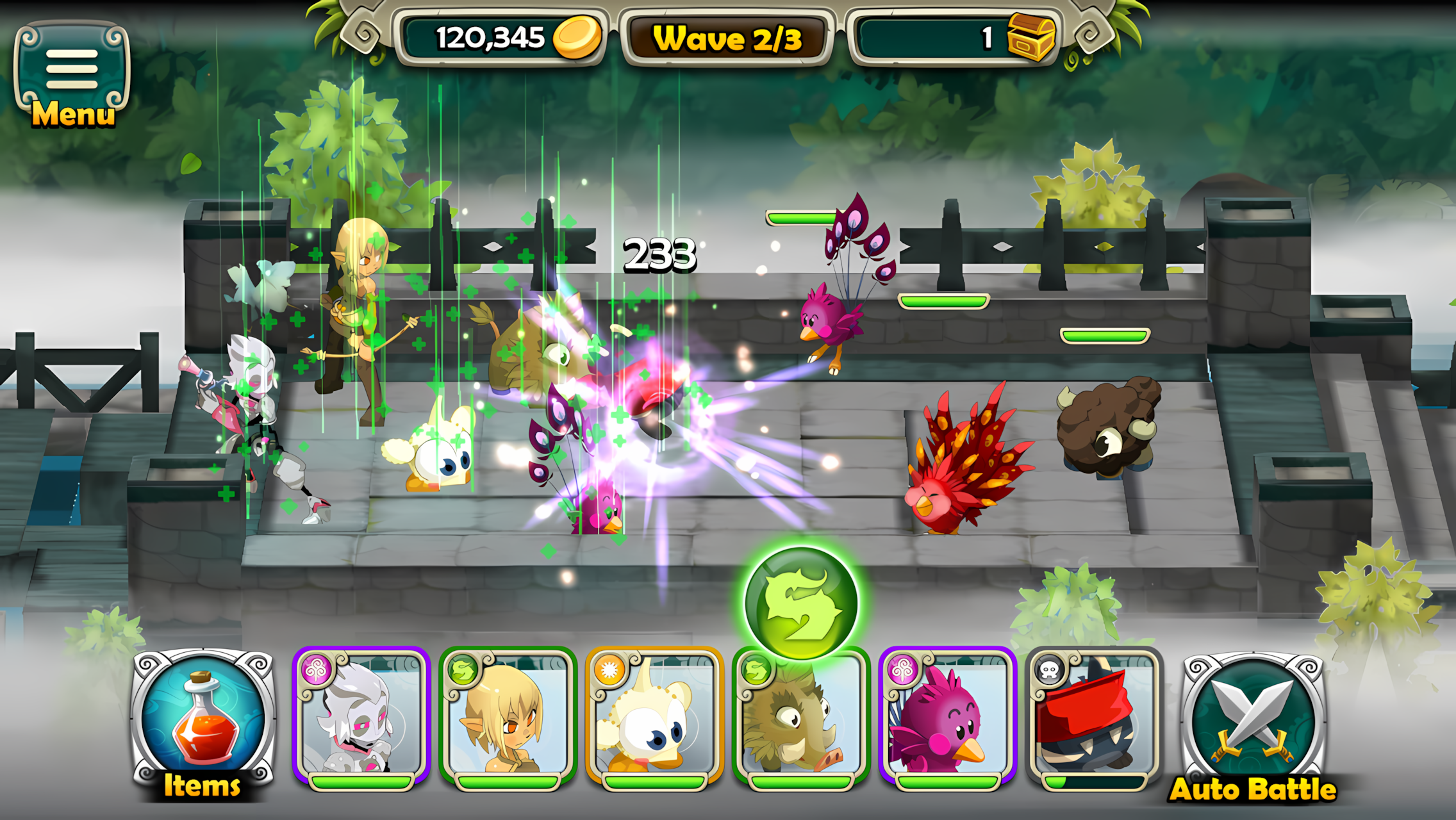
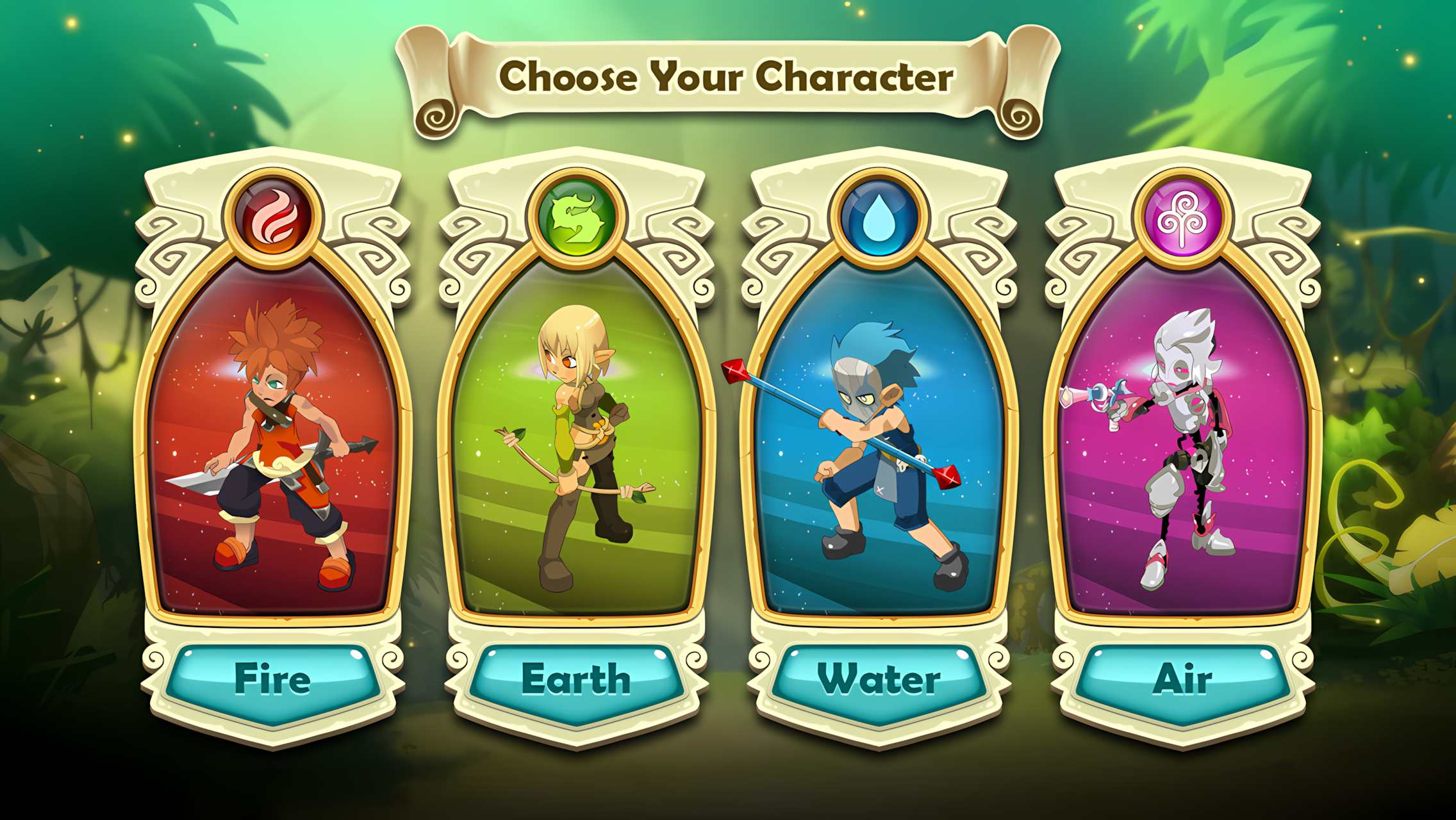
Kris Lee detailed his role as coordinator: « I oversee production, coordinate things with Cash, and talk to people on the ground. I work with artists, programmers, and game designers to ensure everything is on time and that everything fits into the game without issues ». This organization demonstrated an international project involving multiple studios and time zones.
The Gumi Asia team did not just correct the flaws of Brave Frontier; they also innovated. « One of the main things people didn’t like about Brave Frontier was getting the same gacha characters », explained Cash Ong. « We changed how people upgrade their characters, the rarity of characters with Wakfu Raiders ».
Even more revolutionary, the team introduced a feature that would quickly become an industry standard: « We introduced something that is now a very popular feature in many upcoming games, even in Western games, which is the auto-play function ». This innovation, though commonplace today, represented a real breakthrough at the time.
« It’s the kind of thing you either love or hate, but it has been proven time and again that the majority of players seem to want this feature », justified Cash Ong. « The game, similar to Brave Frontier, still allows you to activate your ultimate special skills, but if you do nothing, the game continues to play by itself ».
Artistic Collaboration with Ankama: An Unprecedented Investment
The most exciting aspect of the project lay in the creative collaboration with Ankama. « For me, the main attraction of Wakfu Raiders compared to Brave Frontier is that we have the honor of working with Ankama, the owner of the Wakfu IP », enthused Kris Lee. « They have all these beautiful, interesting characters with a bit of weird dark humor inside ».
This admiration for the Ankama universe was evident in every statement from the developers. « I’m really impressed by Ankama’s graphics, and we can use them in Wakfu Raiders itself », Kris Lee continued. « This brings out the polish of the entire game to another level ».
The visual approach of Wakfu Raiders deliberately contrasted with that of Brave Frontier. « Brave Frontier plays a bit more with pixel art nostalgia, but for Wakfu Raiders, everything is in beautiful graphics, all hand-painted, hand-animated », explained Kris Lee. « This is what I feel is a very nice improvement over Frontier that we’re bringing to our players ».


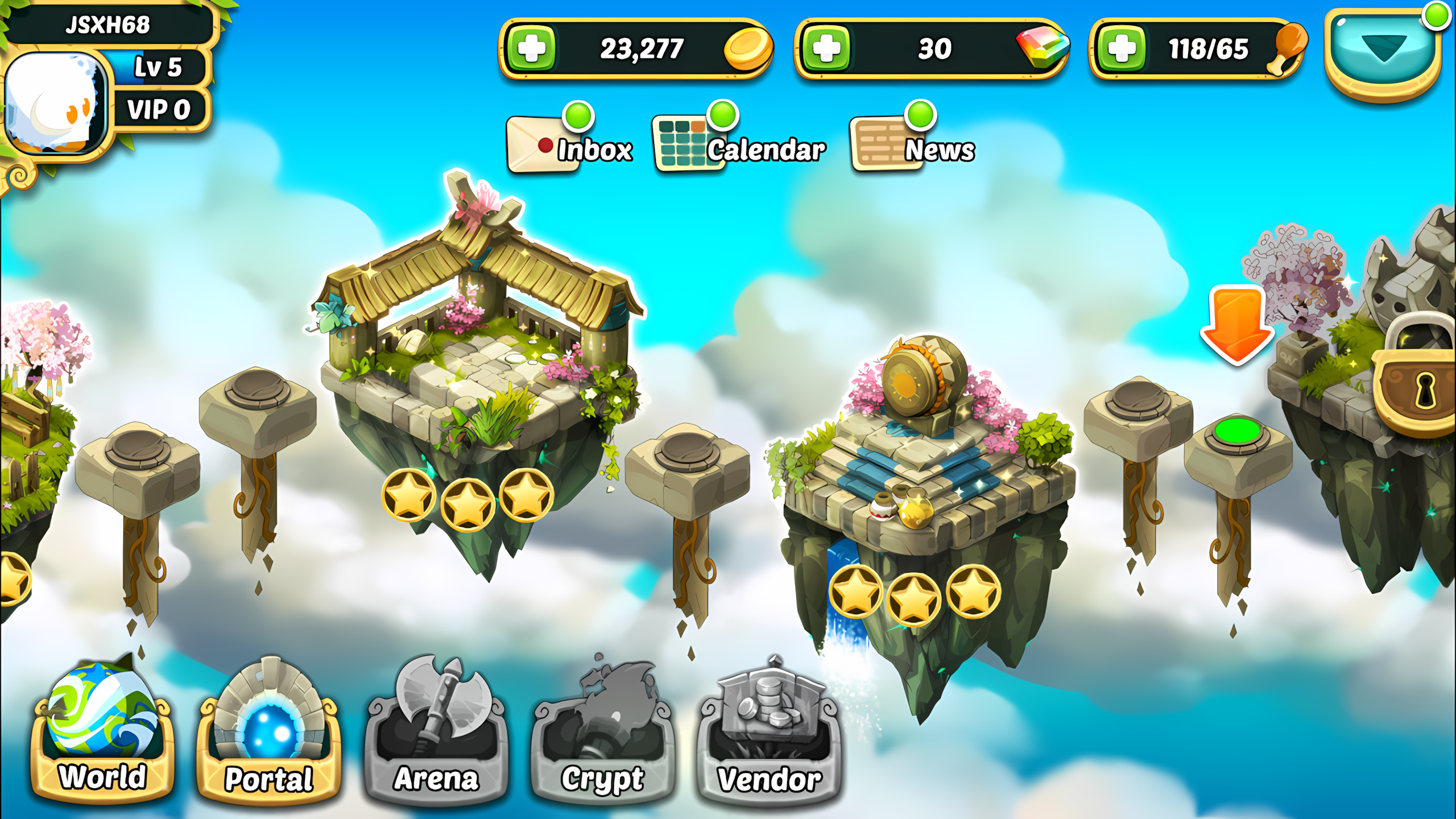
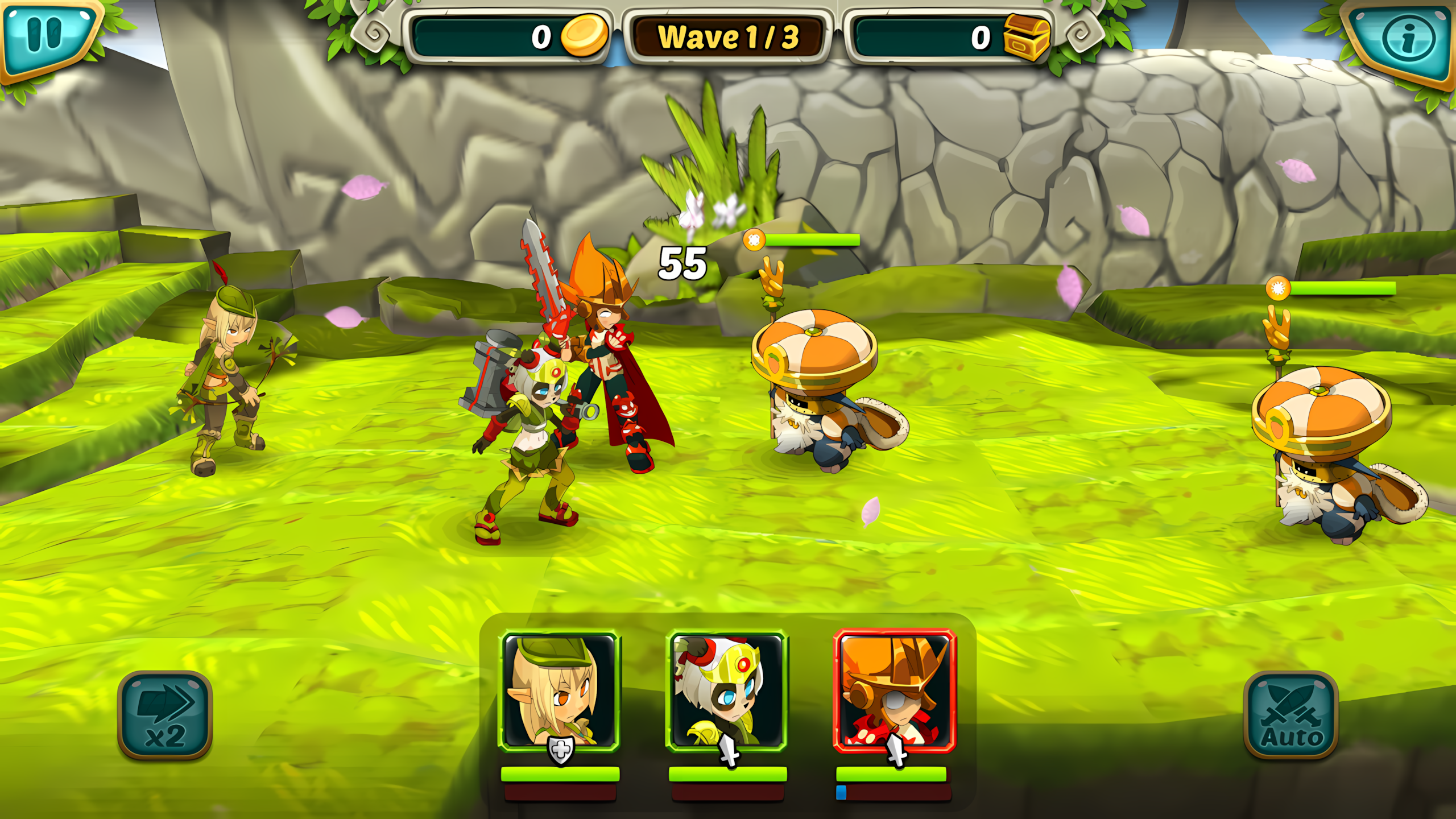

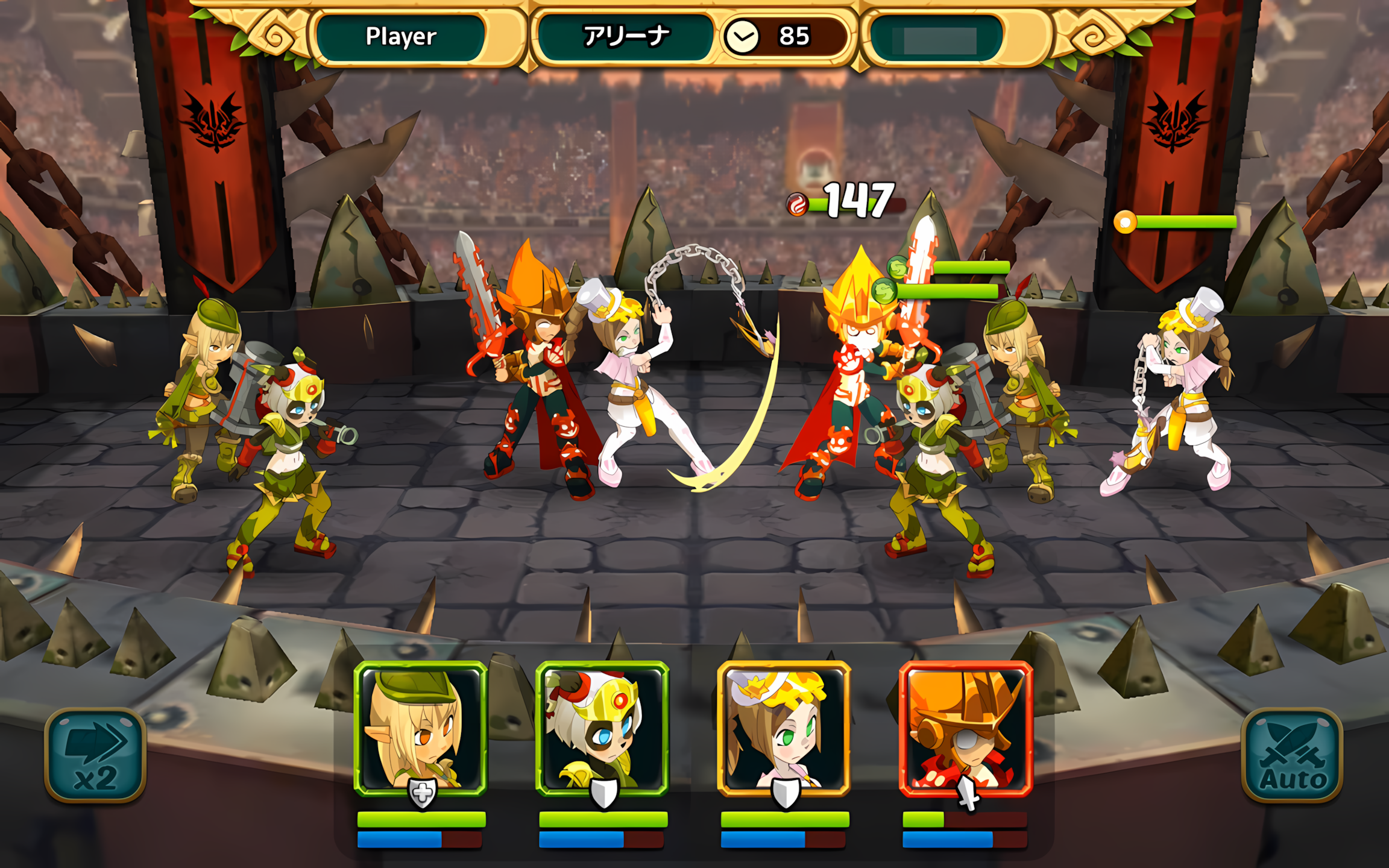
This hybrid artistic direction proved technically ambitious. « We have 2D characters against a 3D environment », detailed Cash Ong. « The art style itself… Ankama did a fantastic job on the IP, they managed to create a unique art style… when you look at Wakfu, you know it’s distinctive ».
In addition to the polished graphics, the team also made the effort to implement professional English voice acting for the characters’ ultimates, a rarity on mobile at the time. This voice work, done for a few heroes by voice actress Rachael Messer (known for her roles in Black Clover, Goblin Slayer, and Borderlands 3), testified to the ambition of creating an experience with high standards. Even today, demo reels of this work still exist.
One of the most ambitious innovations concerned combo attacks. « We created a new system compared to Brave Frontier where, in normal Frontier, you attack in any order, but we also created this team attack system where the order of your attack during gameplay itself… creates an additional team attack based on the type of character combinations put together », detailed Kris Lee.
This mechanic, intended to « take gameplay to the next level », revealed the team’s technical ambition to offer something truly new. However, this additional complexity, added to the existing systems, risked creating an intimidating learning curve for new mobile players.
But the project fell behind schedule. Initially planned for 2014, then postponed, Wakfu Raiders was finally released in July 2015. These delays, common in the industry, perhaps already hid the first technical and creative difficulties linked to this ambitious fusion between two distinct artistic universes.
Release: Between Hopes and Early Signs of Mixed Reception
On July 23, 2015, Wakfu Raiders officially launched on iOS and Android stores in Europe. After more than a year of development, the public could finally discover what this Franco-Japanese collaboration had to offer.



The pitch was ambitious: « Dive into the World of Twelve to solve the mystery of the strange phenomena occurring in the dimension of Etatim », « As one of Yakusha’s subordinates, you must investigate the anomalies appearing everywhere in the world and discover why the gods of the Wakfu kingdom are losing their powers. » This alternative dimension allowed the developers to take some liberties with the established lore while retaining the essence of the Wakfu universe. To my knowledge, we have never seen this dimension again since Wakfu Raiders.
This lore, though less known today, remains accessible in a PDF still available on the old forums. If the subject intrigues you, here’s a summary to discover its essence
Yakusha is the result of a cursed love story between the god Ecaflip (or Zurcarák, depending on the version) and Elish Colahs, a mortal whose beauty and poetry had captivated the deity. To ease his absence, Ecaflip gave her an obsidian mirror, a magical artifact that allowed them to communicate from a distance. But the god’s visits became rarer, and Elish, heartbroken, died in front of a temple, leaving Yakusha orphaned, consumed by hatred and endless sorrow. This trauma marked the beginning of his quest: a rejected demigod, seeking recognition and revenge.
Growing up alone, Yakusha developed powers related to reflections and illusions. He could create perfect copies of objects and multiply into several versions of himself, abilities that reflected his fragmented identity and status as an outcast. Still in possession of the obsidian mirror, he sought answers in it, fascinated by the gray mist swirling within, like an echo of his tormented soul. This mirror, a legacy from his mother, became both a link to his past and a tool for his future power.
His life changed when he met Ush Galesh, his half-brother, in Bonta. Recognized by Ush’s henchmen, Yakusha multiplied to escape them, piquing his brother’s curiosity. When they faced each other, the mirror reacted violently to Ush Galesh’s presence, revealing a deep connection between them: their faces alternated in the obsidian, as if foreshadowing their shared destiny. Ush, intrigued, proposed an alliance to the “ignored,” those gods marginalized by their lineage. But Yakusha, distrustful, fled, refusing any submission.
Exhausted and haunted by Ush’s words, Yakusha fell asleep under a tree, dreaming of a world he could shape in his own image. The mirror, now active, showed a vision of the World of Twelve, then transformed into a swirl of white light. From this dream was born the Etatim Dimension, a universe born of his thirst for power and revenge, where he could finally reign without being ignored.
The narrative approach attempted to appeal to both newcomers and connoisseurs. « The story begins in the stands of a Brakmar arena, a group of adventurers suddenly arrives in the VIP box of the God Xelor », recounted the Otakia review. The scenario, inspired by the codes of lucid dreaming, placed the player in the shoes of a surviving Iop, forced to explore this dreamlike reality to find his companions.
Visually, the game made an impression and fulfilled the developers’ promises. « Graphically, it’s superb, well-animated », the review acknowledged. The characters from the Wakfu universe came to life with a rare quality of animation on mobile. Each hero had fluid and expressive animations, in the pure tradition of French animation, validating Kris Lee’s enthusiastic statements about the collaboration with Ankama.
The gameplay system fulfilled the stated ambition of improving Brave Frontier. The Gumi Asia team had indeed introduced notable innovations, starting with the auto-play system so touted by Cash Ong. « You have to watch for the best time to launch your skills », he had explained. « For Brave Frontier, if you do nothing, everything pauses ».
This feature, revolutionary for the time, immediately divided opinions. The automation allowed players to let their characters fight autonomously while retaining the option to intervene occasionally to trigger special skills. An approach that appealed to busy mobile players but confused Ankama fans accustomed to total control.
The team also emphasized positional strategy, as Cash Ong had promised: « Where you place your units in your group selection, putting them in front, in the middle, or behind, all have different bonuses ». This tactical depth, coupled with the individualized playstyles of each character, demonstrated the desire to enrich the experience compared to the Brave Frontier model.
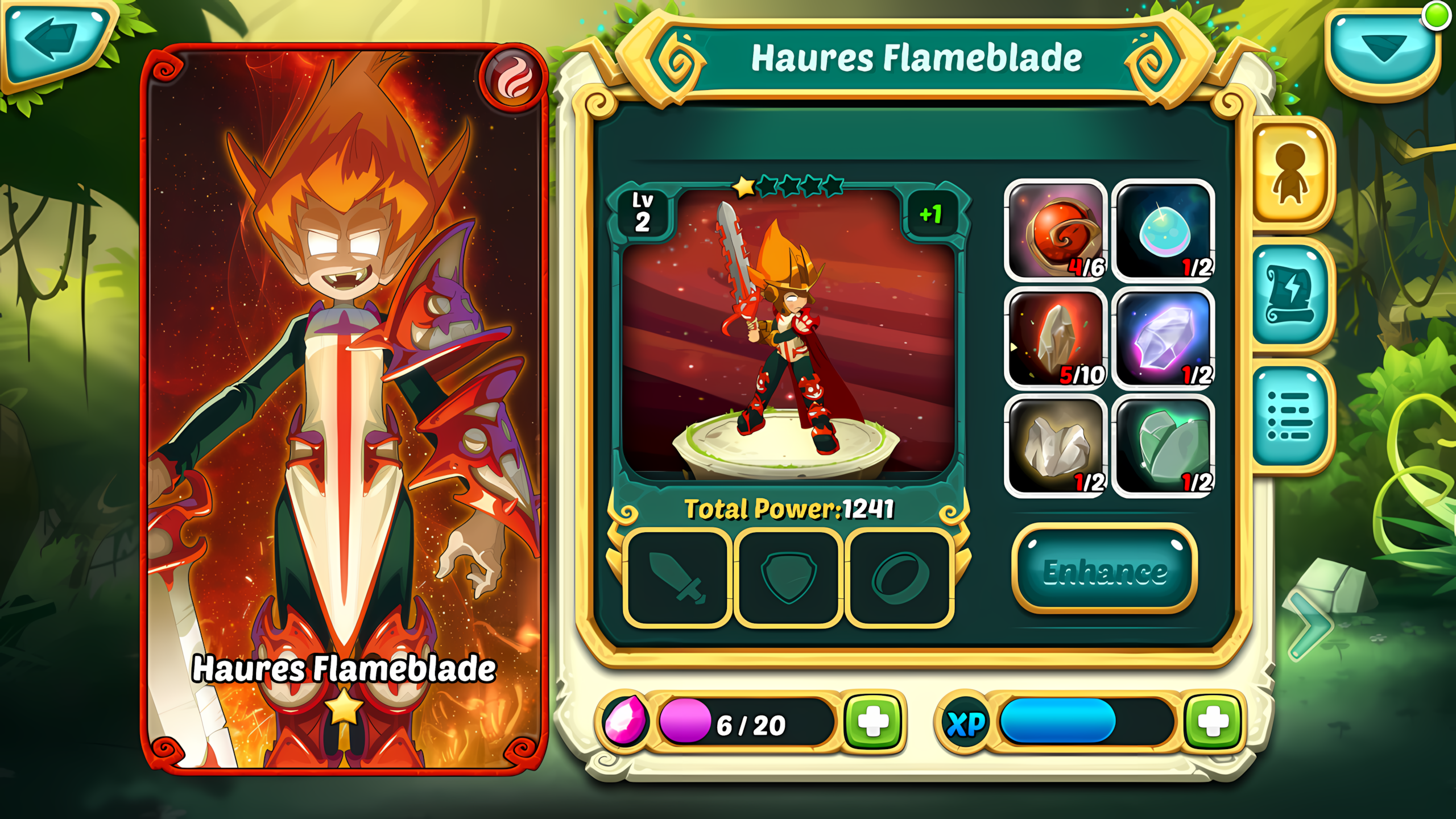
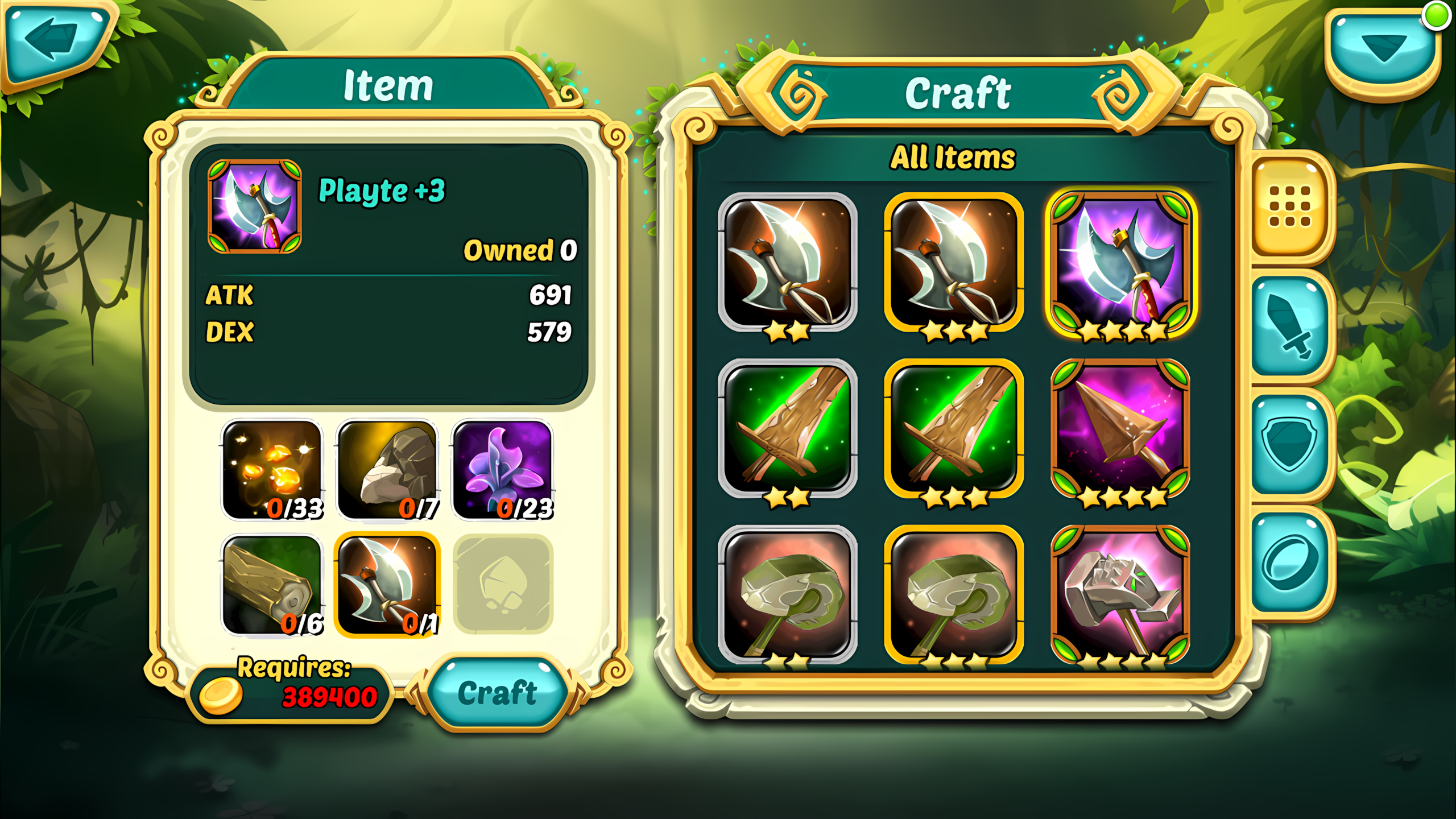
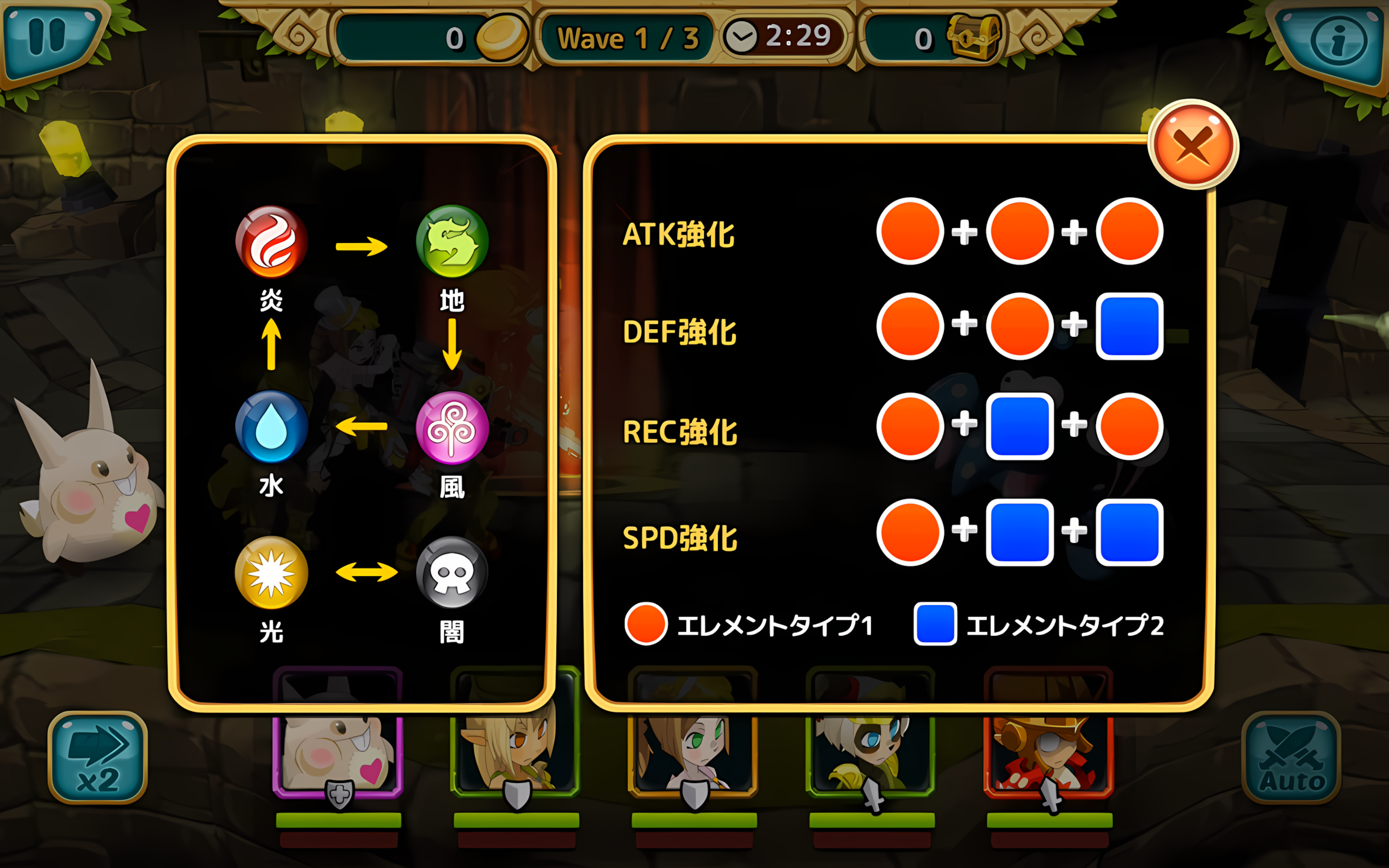


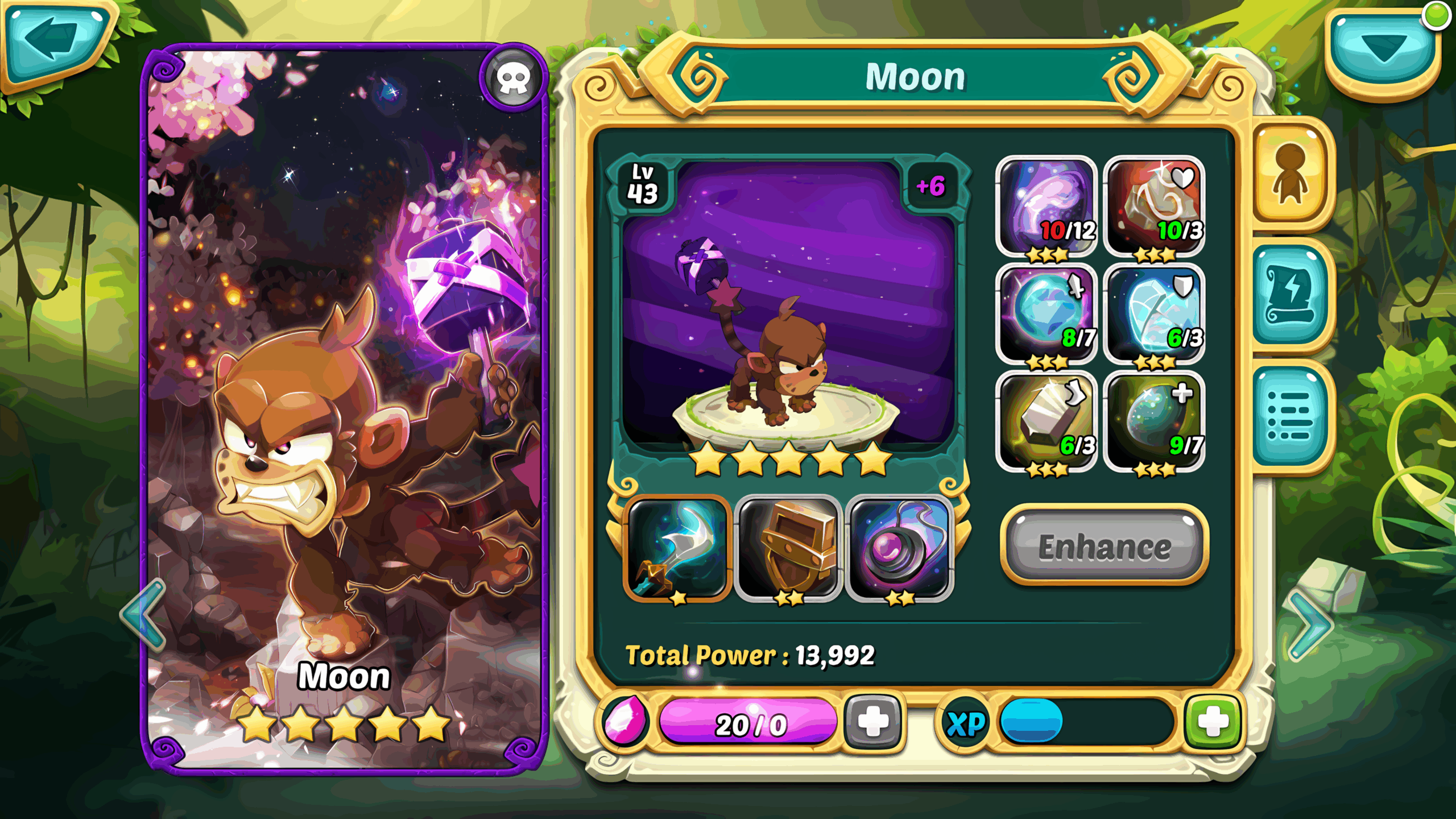

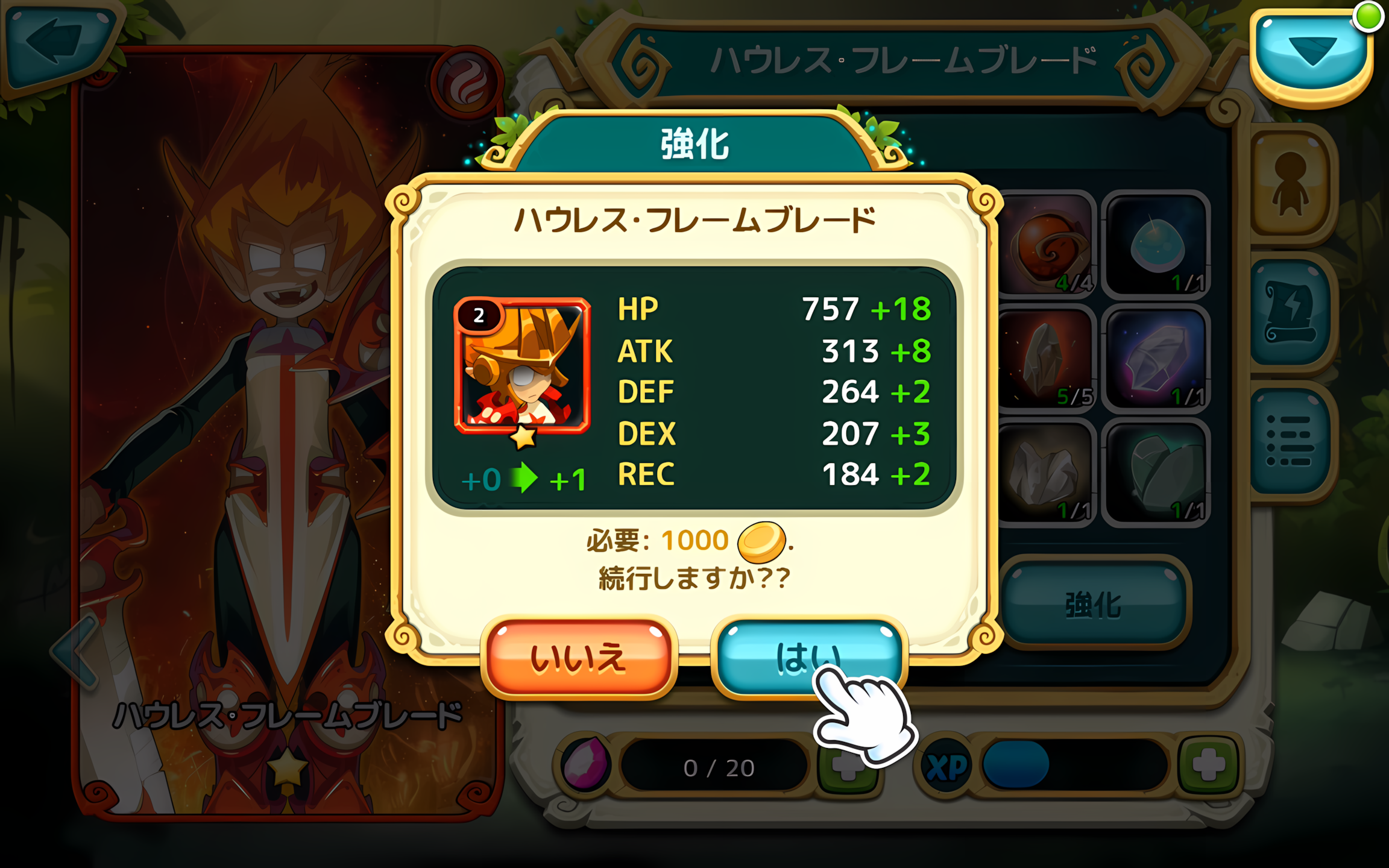
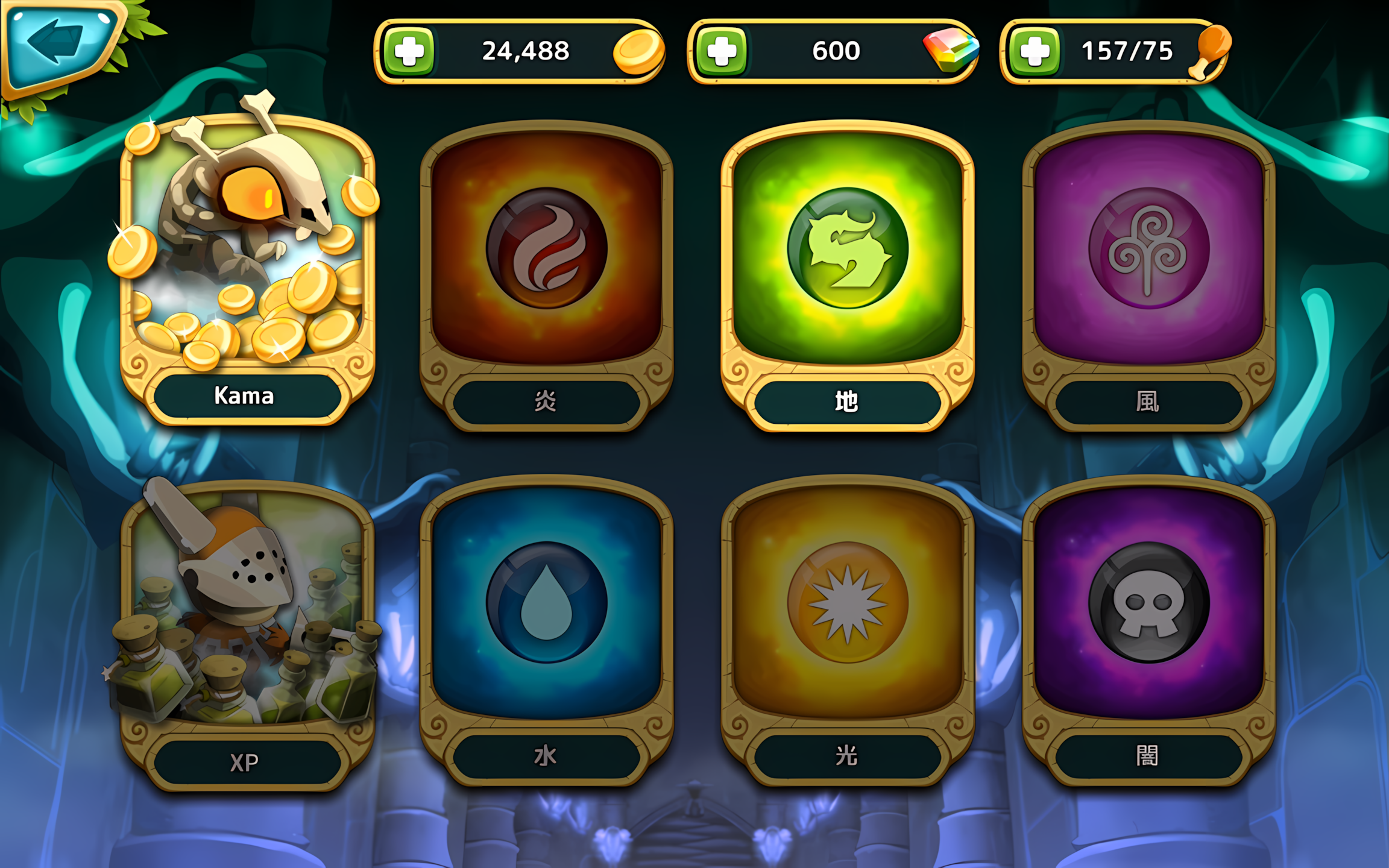
Each world was divided into 8 dungeons, each composed of three rooms with a final boss. This structure, proven in other titles of the genre, offered a clear progression rhythm and short-term objectives, respecting the established codes of mobile.
However, from the first tests, flaws appeared. The tutorial, though « didactic », failed to mask the limitations of the gameplay. « The interaction is very limited, the characters attack on their own, you just have to launch their special moves when their gauge is full », pointed out Otakia. « Unlike other smartphone games already released (Dofus Battle 1 and Dofus Battle 2), we really feel that the impact of our actions is very limited », lamented the review. This automated approach, characteristic of mobile, immediately divided the community. Ankama fans, accustomed to complex mechanics and strategic freedom, felt disappointed.
The critical reception revealed a fundamental paradox: Wakfu Raiders charmed with its aesthetics but disappointed with its gameplay. The auto-combat system, a cornerstone of the game and Cash Ong’s pride, crystallized the criticism. Characters entered battle and fought autonomously, with the player only occasionally activating special skills. « Having the auto-combat option for background farming makes the combat gameplay much less significant in the experience », observed MMOHuts.
MMOHuts noted that « the game isn’t that hard to understand because there have been many similar popular games on the mobile market that use the same engine ». This familiarity, far from being an asset, became a handicap. In a market saturated with mobile RPGs with similar mechanics, Wakfu Raiders struggled to stand out beyond its graphics, despite the improvements highlighted by the development team. This underscored the ambiguity of the project: was it a real Ankama game or just a cosmetic overlay on generic mechanics?
Progression also suffered from this standardization. The difficulty level system (Normal, Elite, Expert) followed the established codes of the genre. The greater rewards of higher levels motivated replayability but at the cost of assumed repetitiveness that contradicted the stated ambition of « next-level gameplay ».
Paradoxically, it was on the narrative aspect that the game disappointed the most. « The initial story is full of promise, but the scenario completely falls by the wayside once you start playing », deplored Otakia. The richness of the Wakfu universe, the project’s main asset according to Kris Lee, diluted into a succession of dungeons without real narrative coherence, wasting the « weird dark humor » so appreciated by the development team.
This frustration particularly affected the longtime fans. The Ankama community, attached to the depth of lore and the complexity of mechanics, felt disappointed by this simplified approach and quickly abandoned the game. MMOHuts acknowledged that « seeing the Wakfu and Dofus characters almost life-sized and up close » was a real asset.
At Krozmotion, we tested the game for several weeks after its release, providing some of the first critical feedback on the project. Our experience perfectly reflected this community division that characterized the game’s reception. The game remained generally enjoyable, and we have good memories of the sessions played. Ankama’s artistic direction shone through in every animation, offering a remarkable visual spectacle for the time.
However, several elements quickly limited our engagement. The repetitiveness of combat and the lack of narrative depth—or at least, a scenario poorly aligned with the usual standards of the Krosmoz universe—created growing frustration over hours of play. This disconnect between Ankama’s rich universe and its simplified mobile transposition likely explains why so many longtime fans expressed their disappointment, despite the artistic beauty touted by the development team.
Finally, the external communication around the game clearly lacked consistency and scope. Exchanges with Ankama’s historical audience were limited to a few articles on official sites and sporadic posts on social media. In reality, the main source of information for players remained to download the game and check updates directly in-game. Such a minimalist communication approach suggests that the game was not primarily targeting Ankama universe loyalists, especially given its simplified mechanics, which were poorly suited to the expectations of traditional fans.
Worse still, the absence of targeted advertising campaigns, especially on mobile—a crucial channel for reaching a wider and more suitable audience for this type of game—worsened the situation. This lack of dialogue with the existing community not only disappointed the expectations of longtime players but also widened the gap between the game’s promise and its reception, contributing to its lack of visibility and adoption. A more aggressive and better-adapted communication strategy would undoubtedly have allowed for a better connection between the product and its potential audience.
The inherent difficulty of simultaneously satisfying two audiences with diametrically opposed expectations. Longtime Ankama fans legitimately expected a rich, complex experience that respected the studio’s tactical identity. Conversely, the mobile audience naturally prioritized immediate accessibility, ease of use, and quick gratification. This fundamental tension, poorly resolved by the development team despite its technical innovations, resulted in a flawed hybrid product that fully satisfied neither of the two target audiences.
A Mixed Legacy
The performance of Wakfu Raiders reflected a mixed success. The game reached over 500,000 downloads on Android according to available data, a respectable figure but insufficient for a project with such high ambitions. For comparison, Brave Frontier had managed to attract over 7 million users, setting the standard that Cash Ong and his team hoped to surpass.
The critical reception revealed notable differences between ecosystems. Released on iOS, the game received an average rating of 4.0 stars based on 257 reviews, compared to 3.84 stars on Android with over 18,000 ratings. This difference suggested that the iOS user base, though smaller, was more receptive to the project.
Analysis of the iOS rating distribution revealed a less marked polarization than on Android. On the App Store, 47.5% of reviews gave the game 5 stars, while only 15.2% gave it 1 star. This more balanced distribution contrasted with the sharper division observed on the Google Play Store, where extreme reviews dominated over moderate ones.
Despite an acceptable launch, Wakfu Raiders struggled to find its cruising speed. Updates followed one after another, attempting to enrich the experience: guild system, level 4 and 5 equipment, new heroes. These additions, typical of the genre, demonstrated the developers’ desire to retain their audience and address initial criticisms, notably by exploiting the crafting system mentioned by Cash Ong during development interviews.
Yet, warning signs gradually accumulated. The generated revenue did not meet Gumi’s expectations, accustomed to global successes like Brave Frontier. The free-to-play economic model, based on in-app purchases of gems and heroes, failed to create the engagement necessary for the profitability of a modern mobile game, despite the promised improvements to the traditional gacha system.
Several factors converged to explain this worrying stagnation. The fierce competition in the mobile market was the first obstacle: in 2015-2016, collectible RPGs multiplied, each trying to replicate the success of Brave Frontier or Puzzle & Dragons. In this competitive jungle, Wakfu Raiders lacked major differentiating elements beyond its artistic direction.
Finally, operational difficulties at Gumi began to be acutely felt. The Japanese studio, in the midst of international expansion, multiplied projects and perhaps diluted its human and financial resources. Managing a mobile game required constant attention: regular events, balancing mechanics, and active community communication. This workload, underestimated at the project’s outset, quickly weighed down the profitability of a title with limited revenue.
The period from January to April 2016 likely marked the time when internal discussions intensified dramatically. On Gumi’s side, financial pressure increased: maintaining global servers and a dedicated team for a barely profitable game became difficult to justify to shareholders. On Ankama’s side, the project’s relative failure fundamentally questioned the studio’s mobile strategy and the effectiveness of international partnerships.
The Painful Announcement
On April 26, 2016, less than 10 months after launch, the axe fell, ending the adventure. Gumi Inc. published a statement that sounded like an admission of failure:
« Greetings Raiders, First of all, thank you for the support you have given to our beloved game, Wakfu Raiders. We have sincerely appreciated that players, old and new, joined us in this adventure in the universe of Etatim […] After several internal discussions, we have unfortunately come to the decision to close Wakfu Raiders, due to operational constraints within the company. »

This diplomatic wording poorly masked the brutal economic reality underlying this decision. The « operational constraints » mentioned corresponded to the simple impossibility of maintaining a loss-making project. In the mobile industry, the rule is ruthless: a title must quickly reach several million users to generate the revenue necessary for its sustainability.
This abrupt closure tragically contradicted the ambitions expressed by Cash Ong and Kris Lee during development. The promised « better Brave Frontier », with its technical innovations and exceptional artistic direction, did not withstand the ruthless realities of the mobile market. The considerable investment by Gumi Asia, which had developed the game « from A to Z », evaporated in a few official lines.
The announcement detailed a closure schedule spread over several months, reflecting a procedure honed by the industry: to soften this bitter pill, the developers generously activated a « end-of-service festivities » mode that turned the final months into a farewell party. Dungeons saw their energy costs reduced, drop rates were significantly improved, massive discounts were applied to all purchases, and all premium content was unlocked for free.
The community’s reaction oscillated between legitimate anger and bitter resignation. Players who had been won over by the project felt deeply abandoned, having invested time and sometimes money into an experience abruptly cut short. On specialized forums, messages of disappointment multiplied, testifying to the paradoxical attachment the game had managed to create despite its glaring flaws.
The development team’s final words resonated with palpable bitterness: « From the bottom of our hearts, we thank you for staying with us. We also want to thank Ankama for allowing us to be creative with their Wakfu universe. » This polite mutual recognition did not mask the bitter failure of the Franco-Japanese partnership, nor the likely bitterness of Cash Ong and Kris Lee in seeing their innovations and hard work reduced to nothing.
The Legacy of a Failure
Today, nearly ten years after its definitive closure, Wakfu Raiders leaves only scattered digital traces. The frozen data of the Google Play Store silently testifies to this aborted adventure: growth at 0%.
These digital vestiges tell a story that official statements dared not admit at the time. A project that no longer generated any downloads, any ratings, any signs of life for years. Yet, the thousands of ratings preserved documented the existence of a real and engaged community, which had taken the time to rate and comment on their experience.
As for the wish for a return, there is sporadic nostalgia among some fans. On Dofus/Ankama forums and Reddit threads, players sometimes suggest bringing back Wakfu Raiders as an accessible mode for subscribers, linking it to Ankama’s existing ecosystem. These voices regret its closure and hope for a re-release, especially with the enduring success of the Wakfu universe through the anime or games. However, this is not a massive movement; the community seems more focused on current titles like Dofus or the Wakfu MMORPG.
Is a return possible? Unlikely. Tot recently reminded in a post on X that the game was developed by Gumi and not by Ankama, and that its operation was not their responsibility. Since 2016, no official announcement from Gumi or Ankama has mentioned a relaunch, with the partnership limited to this single project.
A revival would require renegotiating the license, technical updates for modern mobiles, and a substantial investment, with no guarantee of success in a market saturated with gacha RPGs. Recent research shows no rumors or plans in this direction.
Post-Wakfu Raiders: Lessons Partially Learned?
The bitter failure of Wakfu Raiders paradoxically did not discourage Ankama from pursuing its mobile ambitions but significantly influenced the studio’s strategic approach. The teams clearly learned the hard lessons from this experience to develop a new generation of mobile projects: Tactile Wars, King Tongue, and especially Dofus Touch. The latter title, a direct and faithful adaptation of Dofus for tablets, achieved notable success by offering an experience authentically respectful of the original rather than a simplified and denatured transposition.
Yet, recent history shows that Ankama has not fully internalized all the lessons from Wakfu Raiders. Waven, the new mobile and cross-platform game launched in 2023, struggles to find its formula and echoes the difficulties encountered by its predecessor. As attested by our X thread from April 2025, based on a live session with Tot and XyaLe, Ankama admitted major problems: lack of depth, non-existent social aspects, frustrating gacha, poor optimization, and poorly received narration.
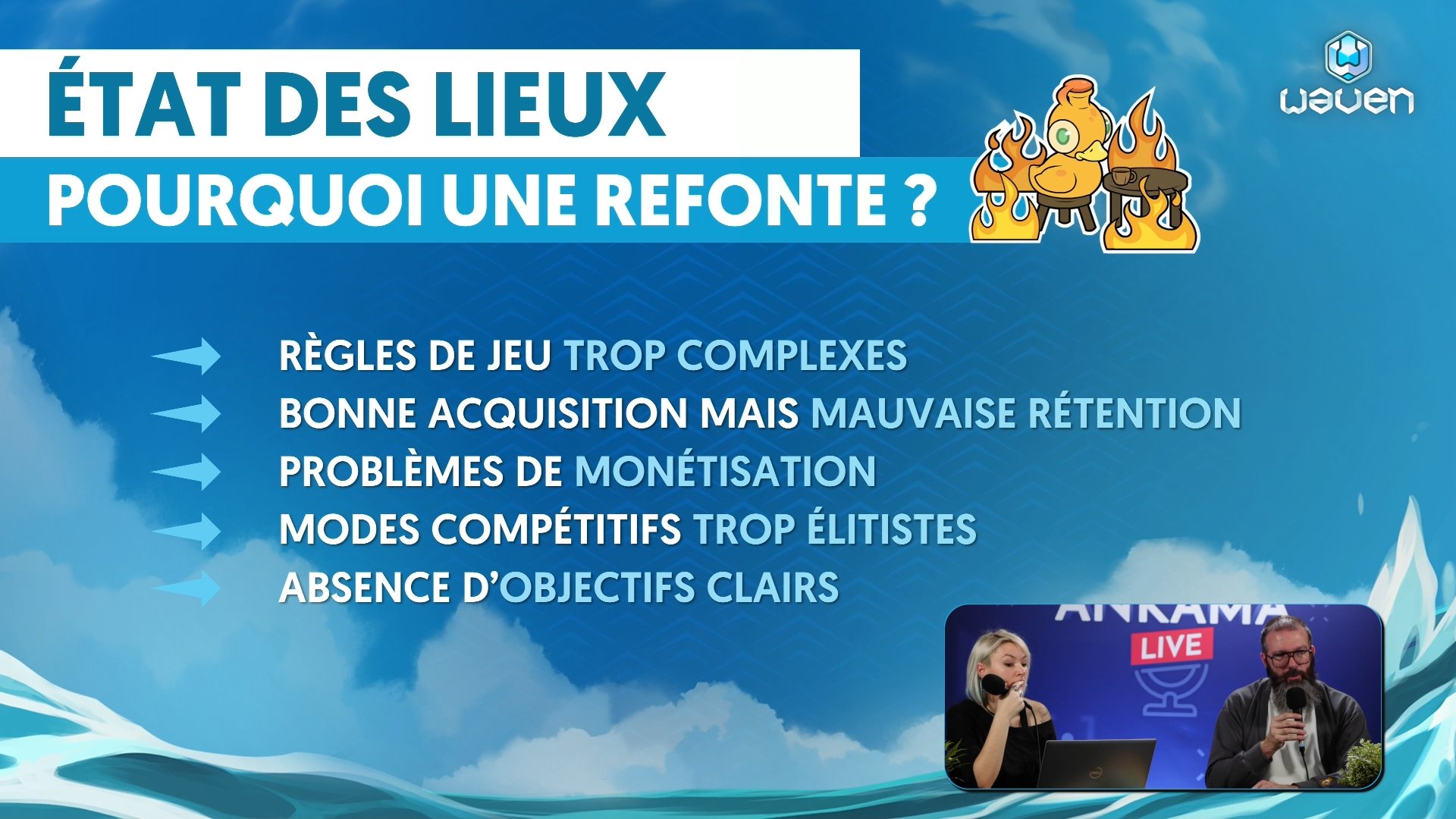
The numbers speak for themselves: Waven generates only 1,000 euros per month, a derisory amount that doesn’t even cover server costs. This critical situation led Ankama to announce an ambitious overhaul (reboot to version 1.0 planned for September 2025), with simplified mechanics, new modes (Rogue Like, Boss Fight), and more regular communication.
An August 2025 update confirmed progress but emphasized that « simplifying a game is not simple », and invited player feedback. Reviews described engaging combat but a game perceived as « empty » or « soulless gacha », with marked drops in engagement. Ankama persists with this hard reset, erasing all player progress, but Waven cruelly illustrates that Ankama’s challenges in innovating while preserving the essence of its universes remain, as they did with Wakfu Raiders before.
For Gumi, the European adventure continued with other partnerships, but the Japanese firm gradually refocused its efforts on its traditional Asian markets, where its cultural understanding remained stronger. The Wakfu Raiders experience likely weighed significantly in this strategic reorientation, demonstrating the limits of international collaborations when creative visions and target audiences do not perfectly align. It cruelly reminds us that in the video game industry, creative genius and the goodwill of teams are not always enough to guarantee success. Sometimes, the best artistic intentions brutally collide with the inflexible imperatives of the market, and the most beautiful creations inevitably sink into collective oblivion. The current difficulties of Waven prove that these lessons remain of troubling relevance.
For the curious wishing to discover what Wakfu Raiders actually looked like in action, a few precious videos remain in the depths of the web. The Smysse TV channel, though inactive today, still offers 9 episodes of gameplay, one per game zone, providing a glimpse of this now inaccessible experience.
This article was written from archives and testimonies collected on the web. If you lived through this era and wish to share your memories, feel free to do so in the comments or on our social networks. Also, don’t hesitate to give us your opinion on this type of retrospective article.
